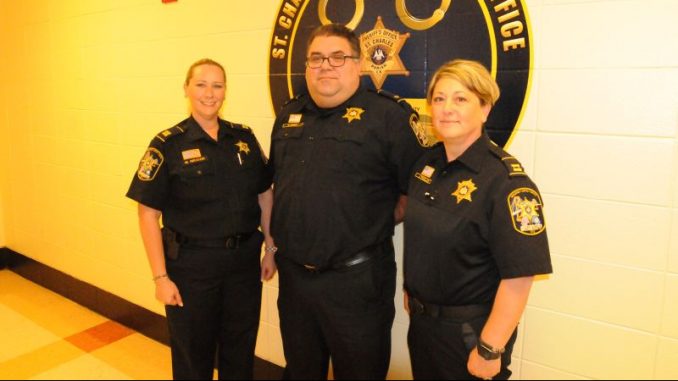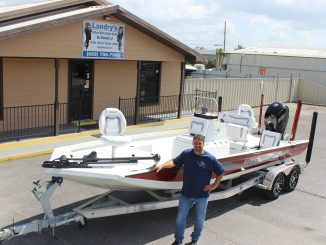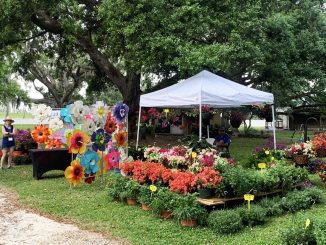
In the days leading up to the landfall of Hurricane Ida, St. Charles Parish Sheriff Greg Champagne had an extremely important decision to make.
Would it be most prudent to evacuate Nelson Coleman Correctional Facility and bring inmates and personnel to an alternate site? Or would it be best to remain at the facility, which was built to withstand a Category 5 storm and would allow his staff control over maintaining proper – and safest – conditions?
Before making the call, he consulted with his staff of corrections officers, and after careful deliberation, the consensus was clear.
“We knew we could sustain a storm,” said Capt. Maureen Gelston, Deputy Warden at Nelson Coleman. “Evacuation is a major event and it takes a lot, logistically. One facility wouldn’t be able to take all of our offenders, and there was so much to work out in a short amount of time. We knew we had the supplies and capability to withstand a storm here.”
Longtime corrections officers had experience to draw from in forming that opinion, after evacuations for Katrina and Gustav, respectively.
“We had an idea of what it entails,” said Lt. Daniel Levet, Lieutenant over records and training. “Weighing the pros and cons, we felt it was more beneficial to stay here. We felt everyone would be safer here than anywhere else.”
There were many checks in the “pros” column in regards to the facility. The Killona jail stands in the midst of an area surrounded by levee that protects over the flood stage level. There are flood pumps and sandbags on site to back that up, even were the grounds to take water. A generator and backup generator ensured power would stay on. The jail holds several weeks worth of supplies, including food, and maintenance and medical teams designated to stay and work at the site – effectively living there – in the aftermath of a major storm were in place. Contracts with vendors were in place to guarantee the delivery of food, fuel and other supplies regularly in the storm’s aftermath.
In short: these were logistics, and this was infrastructure, in place that would not be close to a guarantee elsewhere. As things turned out, Nelson Coleman would also host 40 inmates from St. Mary Parish.
The storm came and went, staying longer than anyone would like. But outside of some minor damage to the jail’s exterior, everything – and everyone –inside proved safe and sound through it all. The generators kept everything running, the power staying on for the duration of the event.
“There are no outside windows in the housing areas for our offenders, so it was an even safer spot,” Gelston said. “Our watch commanders were keeping them as informed as we could. The important thing was to keep everyone calm … a lot of them have family members here, in New Orleans, in North Louisiana, all over, so we wanted to make sure they knew they were safe, we were safe, and as soon as communication is back up, they’ll be able to contact their family members.”
Said Capt. Jessica Troxclair, Assistant Warden, “We discussed a lot of things ahead of time (as a staff) to ensure we could be sustainable here for as long as necessary. Capt. Gelston and I have been through storms before, and that experience let us know, ‘OK, this is what happened last time, this is what should be happening now.’ Those things happened, and they happened faster than they did before (because of prior experience).”
The work at the jail was just beginning, even after the storm passed through.
The corrections team for any police department never tends to be front and center – corrections work in the background, often in relative anonymity. They’re the officers tasked with maintaining and running a smooth operation at a jail site, and when an event like Ida hits, there is no leaving your work behind at the office – their worksite, for the immediate future after Ida, would be their home.
“Having been through Katrina, and knowing this storm projected to be more of a direct hit, we knew we weren’t going home tomorrow,” Gelston said.
That brought the inevitable conflict between fulfilling duty at the prison and to family and home for officers.
To that end, Levet assembled a group of volunteers to go out and take care of things needing attention at deputies’ homes, cleaning up yards, checking on families and taking at least some burden off their fellow officers.
“(Officers) were able to go check their homes, see what the damage was and address things, but at the same time we can’t spend all day there because we have a job to do here,” Levet said. “So this team we put together was able to mitigate some of that,” Levet said.
Over 100 deputies were sheltering on site – some even along with their pets – during and after the storm. Because the jail site remained open and fully staffed, an additional benefit was personnel was centralized in the parish and not dispersed to different areas. That meant better supervision and care at the prison, but also more officers to go out into the community and serve where needed.
Such events tend to form a bond between members of a workforce, but Gelston said the strong bond already in place between officers was ultimately a major reason the crew was able to keep things on course through the turbulence of Ida.
“If Capt. Trosclair had information, she made sure I knew, and if I had it, I made sure she knew,” Gelston said. “And we made sure everyone had all the information. You have to have a bond … you don’t form that during a crisis. You have to have that already.”
Cpl. James Grimaldi, Sheriff’s Office Public Information Officer, noted that even after the word was granted to deputies that they could leave the site and return to live at home, many continued to house at the jail site: a shelter with working electricity, showers and fully stocked with meals, water and personal supplies was very much a rarity in the parish for weeks following the storm.
He said the Sheriff’s Office took some criticism for keeping the prison open through the storm, but said internally, the staff knew it was by far the best route to take.
“We’ve been through several smaller (weather) events in the past and thrived through them all here,” said Grimaldi. “It built assurance.”





Be the first to comment